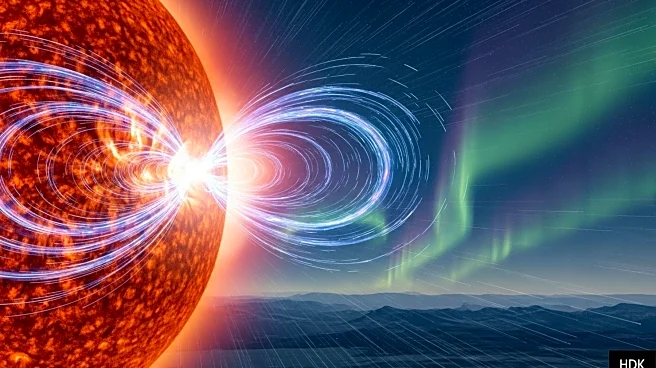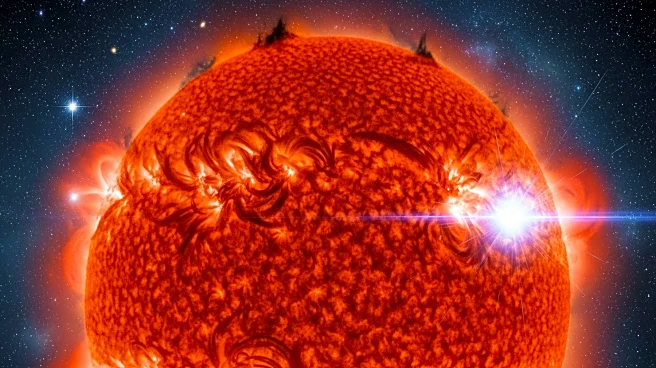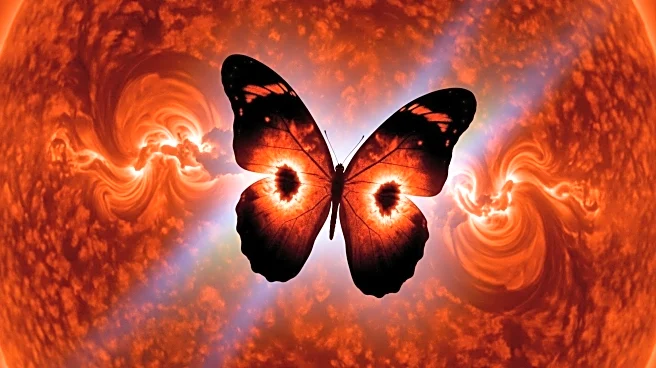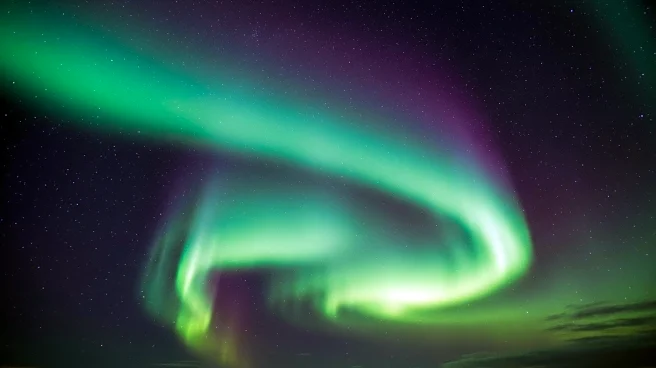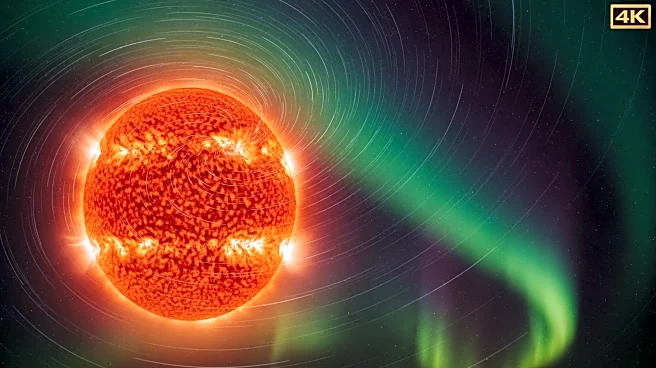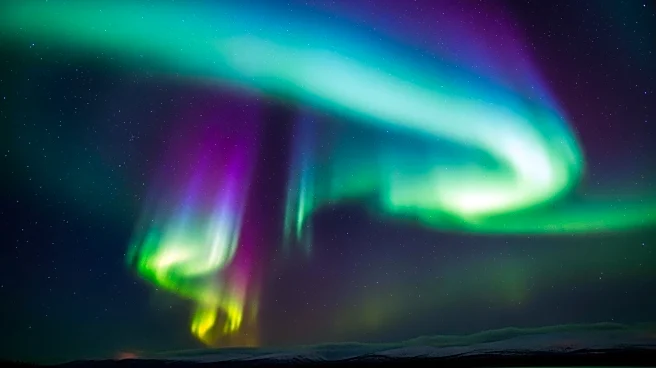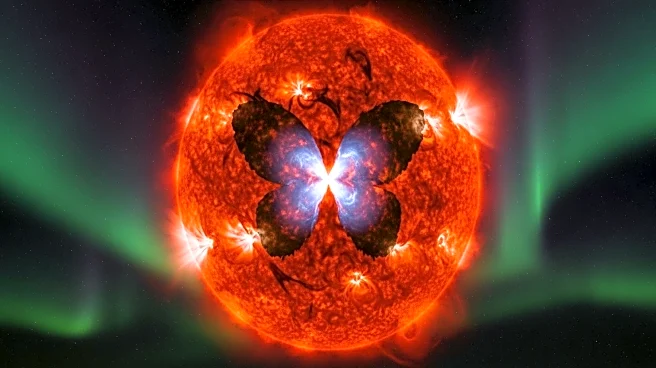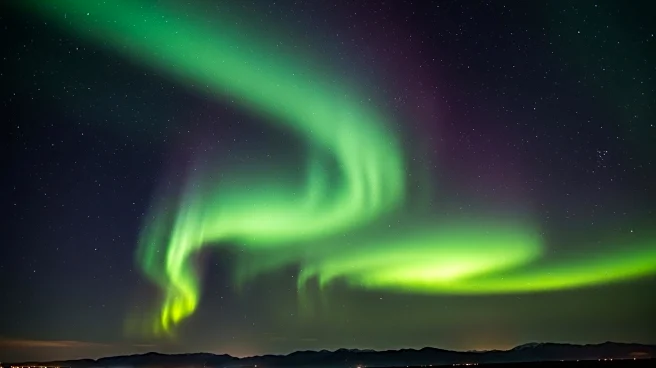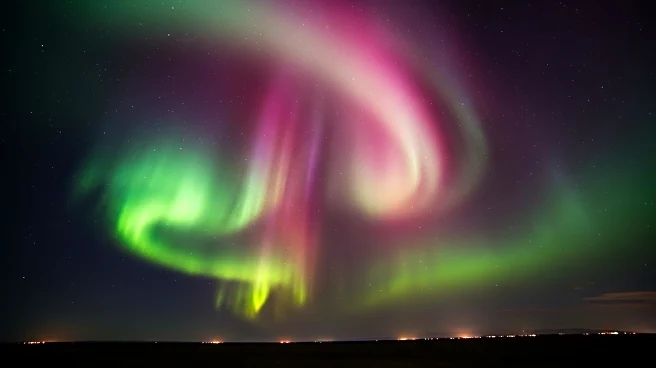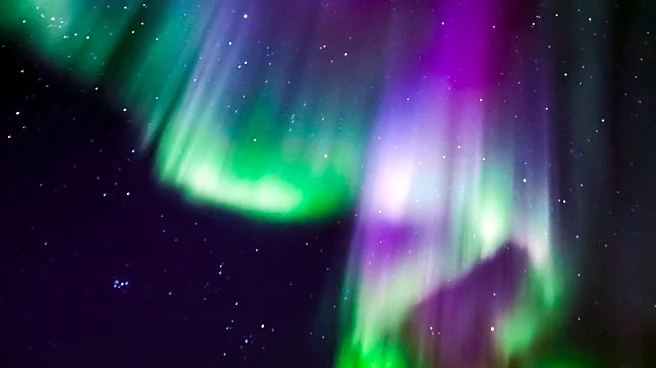What is the story about?
What's Happening?
A significant solar event involving a butterfly-shaped coronal hole on the Sun's surface is expected to lead to geomagnetic storms on Earth. This phenomenon occurs when solar wind, composed of charged particles, escapes through the coronal hole and interacts with Earth's magnetic field. The UK Met Office and Space.com have reported that this solar wind could cause moderate geomagnetic storms, categorized as G2, which may disrupt satellite communications, GPS systems, and power grids, particularly in higher latitudes. The storm is anticipated to arrive between September 13 and 14, 2025, offering a potential spectacle of auroras visible in northern regions such as Canada, Alaska, and parts of the UK.
Why It's Important?
Geomagnetic storms can have significant impacts on technological systems and infrastructure. A G2 storm, while moderate, can still cause disruptions in satellite operations and navigation systems, which are critical for communication and transportation. Power grids, especially those in higher latitudes, may also experience fluctuations. Additionally, the event provides an opportunity for scientific observation and public engagement with natural phenomena like auroras. The timing of the storm, close to the autumnal equinox, enhances the likelihood of aurora visibility due to the Russell-McPherron Effect, which increases geomagnetic activity during equinoxes.
What's Next?
As the solar wind approaches Earth, monitoring by space weather agencies like the NOAA Space Weather Prediction Center will continue to assess the storm's potential impact. Stakeholders in satellite and power grid operations will likely prepare for possible disruptions. Skywatchers and photographers in northern latitudes are advised to be on alert for potential aurora displays, which could be more vivid due to the equinox effect. The scientific community will also be keen to study the interactions between the solar wind and Earth's magnetosphere during this period.
Beyond the Headlines
This event highlights the interconnectedness of solar activity and terrestrial technology. It underscores the importance of space weather forecasting in mitigating risks to critical infrastructure. The occurrence of such solar phenomena also raises awareness about the need for robust systems to handle potential disruptions. Furthermore, it offers a reminder of the natural beauty and complexity of space weather, encouraging public interest in astronomy and science.
AI Generated Content
Do you find this article useful?
